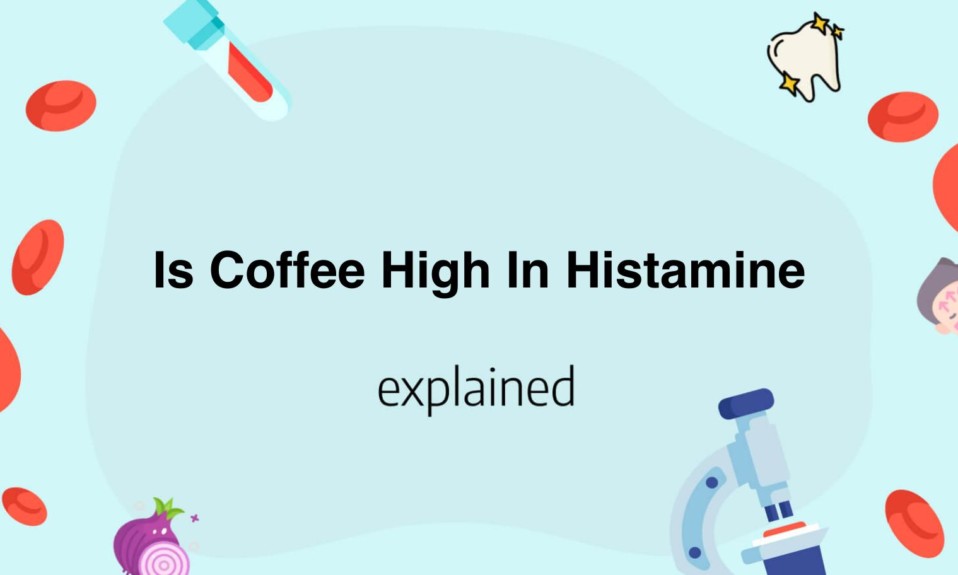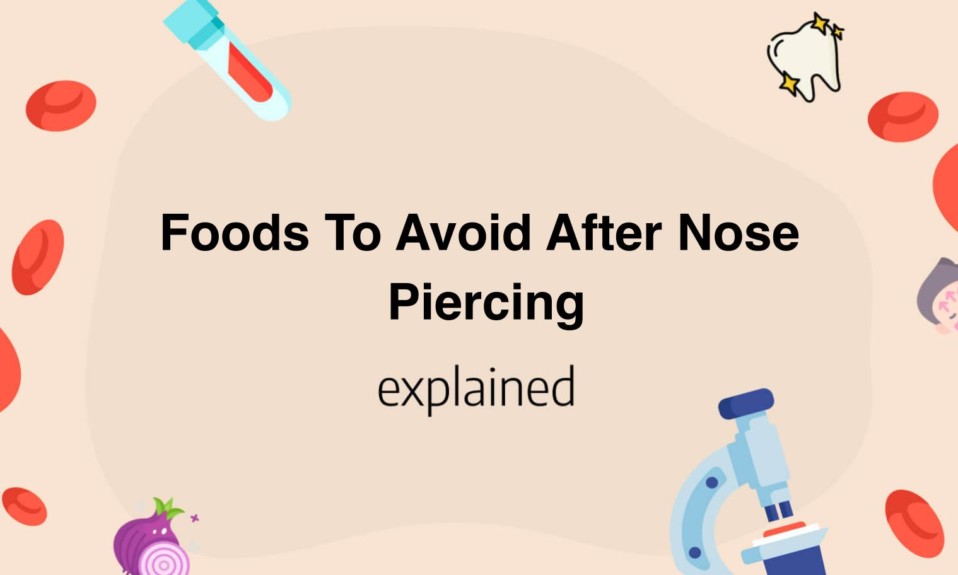Is coffee high in histamine? This question has been a topic of interest for coffee lovers and individuals with histamine intolerance.
Histamine intolerance is a condition where the body has difficulty breaking down histamine, resulting in various symptoms.
Coffee is often debated for its potential to trigger histamine reactions due to the presence of this compound.
In this article, we will explore the relationship between coffee and histamine, shedding light on whether it is a concern for those with histamine intolerance.
Whether you are a coffee connoisseur or someone looking to understand more about histamine levels in your daily cup of joe, this article aims to provide valuable insights.
- Coffee doesn’t contain high levels of histamine.
- Histamine is a chemical compound that can trigger allergic reactions and cause symptoms like headaches, dizziness, skin rashes, and digestive issues in susceptible individuals.
- People with histamine intolerance or sensitivity may experience adverse reactions when consuming histamine-rich foods, including coffee.
- However, the histamine content in coffee can vary greatly, depending on factors such as the coffee beans, brewing methods, storage conditions, and individual tolerance levels.
- It is best for individuals who suspect histamine intolerance to monitor their own symptoms and consider reducing their coffee intake or opting for coffee alternatives that are lower in histamine.
Is Coffee High In Histamine
Coffee is not considered to be high in histamine.
Histamine content can vary among different types of foods and beverages, and while some people may experience histamine intolerance, coffee is generally not a major contributor in this regard.
However, it is important to note that the way coffee is processed and brewed can affect its histamine levels.
Dark roasted coffee beans have been found to have lower levels of histamine compared to lighter roasts.
This is because the roasting process can break down and degrade histamine.
So, if you are concerned about histamine content, opting for a darker roast might be a good choice.
Furthermore, the brewing method can also impact histamine levels in coffee.
Instant coffee is known to have higher histamine levels compared to filtered coffee.
This is because instant coffee is typically made from a concentrate that undergoes a different processing method.
When it comes to brewing your coffee, choosing a paper filter can help filter out some of the histamine, resulting in a potentially lower histamine content in your cup.
It’s important to note that histamine intolerance varies from person to person, and while coffee may not be a major source of histamine for most people, some individuals may still experience symptoms after consuming it.
If you suspect that coffee or histamine-containing foods are causing issues for you, it’s best to consult with a healthcare professional who can provide personalized advice and guidance based on your specific needs.
Opting for a darker roast and using a paper filter when brewing your coffee can potentially reduce its histamine content.
However, if you have histamine intolerance, it’s important to listen to your body and consult a healthcare professional for personalized guidance.
Exploring Histamine: Understanding Its Role In Our Body
Histamine is a compound that plays a significant role in our bodies.
It acts as a chemical messenger and is involved in various physiological processes.
When it comes to coffee, the question of whether it is high in histamine often arises.
Coffee itself does not contain histamine, but it can stimulate the release of histamine in the body.
This is due to the presence of certain components in coffee, such as caffeine and N-methylpyridinium (NMP).
These substances can trigger the release of histamine from mast cells, which are immune cells involved in allergic reactions.
So while coffee may not be high in histamine, it can indirectly promote the release of histamine in some individuals.
If you are sensitive to histamine, consuming coffee may lead to symptoms such as headaches, hives, nasal congestion, or gastrointestinal issues.
However, it’s important to note that histamine sensitivity can vary from person to person.
Some individuals may tolerate coffee well, while others may experience adverse reactions.
It’s all about understanding your own body and how it responds to different foods and substances.
To manage histamine levels in your body, it’s important to be aware of not just coffee but also other histamine-rich foods and beverages.
Some examples of histamine-rich foods include aged cheeses, fermented foods, cured meats, and alcoholic beverages.
By minimizing your intake of these foods and moderating your coffee consumption, you may be able to reduce histamine-related symptoms.
Additionally, there are other dietary and lifestyle strategies that can help support your histamine balance, such as consuming a nutrient-rich diet, managing stress, and getting adequate sleep.
In summary, while coffee itself is not high in histamine, it can stimulate the release of histamine in the body.
Individuals who are sensitive to histamine may experience adverse reactions when consuming coffee.
Being mindful of histamine-rich foods and implementing lifestyle strategies can help manage histamine levels.
Remember to listen to your body and make choices that support your overall well-being.
The Potential Link Between Coffee And Histamine Levels
Coffee has been a beloved beverage for many years, providing a burst of energy and a comforting warmth to start your day.
However, have you ever wondered about the potential link between coffee and histamine levels? It’s a question that has gained attention, as histamine intolerance becomes more recognized and understood.
While coffee itself does not contain histamine, it can impact histamine levels in the body in different ways.
Let’s delve into this intriguing connection further.
Firstly, it’s important to note that histamine is a compound naturally produced by the body and also found in certain foods.
It plays a crucial role in various bodily functions, including the immune response, digestion, and the regulation of sleep-wake cycles.
However, for individuals with histamine intolerance, their bodies struggle to break down and eliminate excess histamine, leading to a range of unpleasant symptoms such as headaches, skin rashes, and digestive issues.
When it comes to coffee, its impact on histamine intolerance can vary from person to person.
While the coffee bean itself is not a significant source of histamine, certain factors in the coffee-making process can influence histamine levels.
For instance, the fermentation process involved in creating certain coffee varieties, such as decaf and cold brews, can result in higher histamine content.
Additionally, the storage and freshness of coffee beans can also affect histamine levels.
Coffee that is improperly stored or past its expiry date may contain higher histamine levels, potentially triggering symptoms in individuals with histamine intolerance.
Apart from its potential histamine content, coffee can also indirectly affect histamine levels through its impact on the body’s stress response.
Caffeine, a key component of coffee, stimulates the release of cortisol, the primary stress hormone.
Elevated cortisol levels can increase inflammation and disrupt the immune system, potentially exacerbating histamine intolerance symptoms.
Additionally, caffeine can also block the activity of an enzyme called diamine oxidase (DAO), which is responsible for breaking down histamine in the body.
Therefore, individuals with histamine intolerance may find that consuming coffee can further burden their already compromised ability to eliminate excess histamine.
While the potential link between coffee and histamine levels is intriguing, it’s worth noting that every individual may react differently.
Some people with histamine intolerance may find that they can tolerate moderate amounts of coffee without experiencing symptoms, while others might need to avoid it altogether.
If you suspect histamine intolerance, it’s essential to consult with a healthcare professional or a registered dietitian who can provide personalized advice and guidance.
Remember, understanding your body’s unique needs and making informed choices is key to maintaining overall well-being.
Read also: Foods To Avoid With Svt
The Science Behind Coffees Potential Influence On Histamine
The potential influence of coffee on histamine levels is a topic that has gained attention among coffee enthusiasts.
While coffee is not directly high in histamine, it may have an impact on histamine release in the body.
When you consume coffee, the caffeine stimulates the release of histamine from mast cells.
This can lead to a cascade of histamine release throughout the body, potentially triggering allergic reactions or worsening existing histamine-related conditions.
It is important to note that histamine intolerance is a complex condition, and the relationship between coffee consumption and histamine levels can vary from person to person.
Some individuals may be more sensitive to histamine and may experience symptoms such as headaches, runny nose, or skin rashes after consuming coffee.
Others may not notice any adverse effects.
To manage histamine levels while still enjoying your favorite brew, there are a few strategies you can consider.
First, you may want to opt for freshly roasted coffee beans, as they tend to have lower histamine content compared to older beans.
Additionally, brewing methods such as pour-over or espresso are known to produce coffee with lower histamine levels compared to methods like French press or cold brew.
When selecting coffee, it may also be beneficial to choose organic and fair trade options, as they are less likely to contain additives or contaminants that could trigger histamine release.
Ultimately, if you suspect that coffee is impacting your histamine levels, it is advisable to consult with a healthcare professional or allergist who can provide personalized guidance.
They can help identify any underlying histamine-related conditions and develop a tailored approach to managing your coffee intake.
Remember, everyone’s tolerance to histamine is unique, so it’s essential to listen to your body and make choices that align with your individual needs and preferences.
You’ll also like: Foods To Avoid After Nose Piercing
Differences In Histamine Levels: Comparing Various Coffee Types
When it comes to histamine levels in coffee, there are notable differences among various types.
Some coffee beans naturally contain higher levels of histamine, while others have lower concentrations.
However, it’s important to note that the roasting process can also affect histamine levels.
Dark roasted coffee beans tend to have lower histamine levels compared to light roasted ones.
Moreover, the brewing method can also impact the histamine content in your cup of coffee.
For instance, espresso generally contains higher levels of histamine due to its extraction process, which involves applying high pressure and hot water over a short period.
On the other hand, filtered coffee has lower histamine levels because the filtration process removes impurities that may contribute to histamine content.
If you are particularly sensitive to histamine or have been diagnosed with a histamine intolerance, it is worth considering alternatives such as decaffeinated coffee or cold brew.
Decaffeinated coffee typically has lower histamine levels, as the decaffeination process removes some of the compounds that contribute to its histamine content.
Additionally, cold brew coffee is made by steeping coarsely ground coffee in cold water for an extended period, resulting in a smoother and less acidic flavor while potentially lowering histamine levels.
In summary, the histamine levels in coffee can vary depending on various factors, including the type of coffee bean, the roasting process, and the brewing method.
If histamine intolerance is a concern for you, experimenting with different types of coffee and brewing methods may help you find a suitable option that aligns with your preferences and dietary needs.
Remember to enjoy your coffee in moderation and prioritize your well-being.
You’ll also like:









